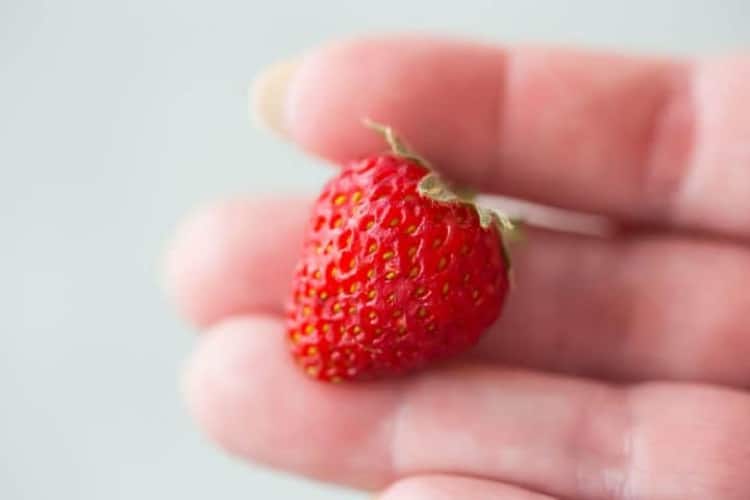
You’ve most likely heard a minumum of one myth about diabetes and diet. Maybe you have been told that you need to avoid sugar, or that you simply can’t eat fruit.
But while it is true that you ought to limit particular foods, fruit isn’t one of these.
Yes, sugary foods can improve your bloodstream glucose level. However, eating fruit affects blood sugar levels differently than eating chocolate cake or cookies. It’s everything related to the dietary content and makeup of various foods.
So, if you are a large fan of bananas, it’s not necessary to kick this fruit – or berries, generally – towards the curb. Eating bananas along with other fruits is essential for a healthy diet plan. Plus, bananas are lower in calories and a great resource of antioxidants, fiber, along with other nutrients.
However if you simply have diabetes, it’s still vital that you know how these berries affect bloodstream sugar.
Can One eat bananas?
For those who have diabetes, you may still eat goodies like cake, cookies, and frozen treats. But moderation is essential to stopping bloodstream sugar spikes.
Bananas aren’t only scrumptious and refreshing, but they’re the right treat as their sweetness satisfies your sweet tooth.
Eat moderately
Watch out for certain dishes that could appear healthier compared to what they are, since they include bananas.
Some desserts, for example pies and cheesecakes, include bananas as toppings. Yet, a number of these desserts aren’t exactly diabetes-friendly, because the overall sugar content could cause a rise in bloodstream sugar.
Dietary content
Eating bananas alone is good since the fruit is lower in calories. Typically, single serving of bananas has about 46 calories.
This really is useful if you are watching unwanted weight. Maintaining a proper weight can lower bloodstream sugar naturally which help you prevent diabetes complications.
Fiber
Bananas will also be an excellent source of fiber. Single serving of whole, fresh bananas contains about 3 grams (g) of fiber, or roughly 12 % from the suggested daily intake.
Consuming fiber is essential for those who have diabetes since it helps slow the absorption of sugar. Besides fiber enhance your bloodstream sugar level, but it can benefit you are feeling full longer. This plays a role in healthy weight loss.
Minerals and vitamins
Other important vitamins and nutrients present in bananas include ascorbic acid and magnesium.
Based on research, magnesium can improve insulin resistance, reducing the chance of diabetes type 2 and improving diabetes control.
Additionally, ascorbic acid continues to be associated with a lesser chance of developing diabetes type 2, and it will reduce bloodstream sugar spikes after meals. The antioxidants in ascorbic acid might even reduce certain complications of diabetes, for example high bloodstream pressure.
What’s the index list?
When deciding which fruits to consume and limit, you might want to know where they rank around the index list.
The index list ranks carbohydrates based on how quickly or how slow they increase bloodstream blood sugar levels. Individuals with diabetes frequently try to eat foods having a low glycemic load, including low-glycemic fruits.
Bananas fall under this category, because the fruit doesn’t rapidly raise blood sugar levels. To nibble on them without having to worry in regards to a bloodstream sugar spike.
Understanding the glycemic load of various kinds of meals are useful. It can benefit you choose things to eat.
Other fruits
While fruits aren’t not allowed for those who have diabetes, bear in mind that some fruits will have a greater glycemic load than the others. But fruits having a greater index list are OK moderately.
Take watermelon, for instance. It ranks high in index list, but it features a low quantity of digestible carbohydrates. What this means is you would need to consume a lot of watermelon for this to possess a negative impact on your bloodstream sugar.
Also, it’s vital that you realize that the index list measures how rapidly food causes your bloodstream sugar to improve. It doesn’t look at the dietary makeup of food.
So, while a food may rank have less the index list, it may be full of fat – and never the best option if you are searching to keep a proper weight.
Eating healthily for diabetes
Good diet is important when maintaining a proper weight and managing your diabetes. It’s about balance. This requires eating a mixture of nutritious foods, including:
- lean proteins
- fruits
- vegetables
- whole grain products
- legumes
- low-fat milk products
It’s also wise to limit any beverages or foods with added fat and sugar. If you are unsure things to eat, your physician can suggest a dietitian to assist generate nutrition.
Based on the Cdc and Prevention (CDC)Reliable Source, about 45 percent of the calories may come from carbohydrates.
Nearly all women can consume three areas of carbohydrates per meal, while men can consume as much as five servings per meal. One serving includes 15 g of carbohydrates.
When snacking among meals, limit your carbs to around 15 g. A mug of bananas falls in this particular range, so that you can love this particular snack without them inside your bloodstream sugar an excessive amount of.
Healthy strawberry recipes
Obviously, eating raw bananas could possibly get boring before long. Here’s a glance at a couple of diabetes-friendly strawberry recipes in the American Diabetes Association to do this week. Each recipe has under 15 g of carbohydrates.
- lemony fruit cups
- frozen yogurt fruit pops
- fruit and almond smoothie
- fruit and cheese kebabs
- fruit-filled pancake puffs
